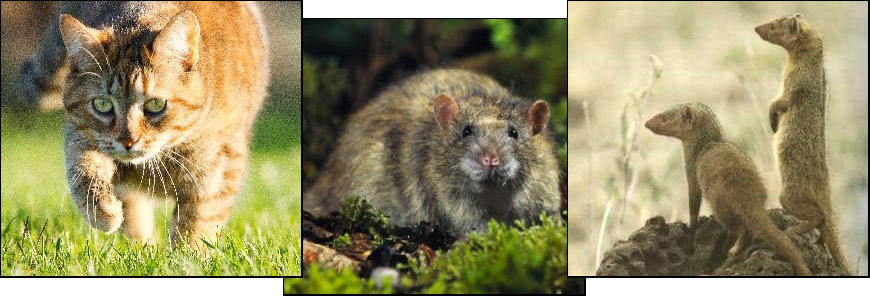Human Impacts
Human impacts, direct or indirect on the environment includes negative changes to natural habitats and ecosystems, biodiversity, and other natural resources. Humans are responsible for global warming, environmental degradation, i.e., ocean acidification, pollution, and the extinction of wildlife and plant species. Air travel has greatly accelerated the introduction and movement of invasive species to Hawaii and the mainland. Human impact threats include: loss and degradation of habitat; introduction of invasive species, spread of disease, destructive recreational activities, construction, light pollution, and changes in ecology related to climate change.
What makes a species invasive?
Invasive species are an undesirable biological entity that is either intentionally or accidently introduced by a human agent. Many features are attributed to invasive species and invaded ecosystems, but none are universal; invasive species tend to have a suite of traits rather than all of them. Common invasive species traits include fast growth, rapid reproduction, high dispersal ability, phenotypic plasticity (ability to alter one’s growth form to suit current conditions), allelopathy (a mechanism whereby the invader prevents other plants from growing nearby), tolerance of a wide range of environmental conditions, ability to live off of a wide range of food types, single parent reproduction (especially in plants), and, commonly, association with humans.
An example of non-native vertebrate and invertebrate animal species at MCBH, e.g., mongoose, free-roaming cats (feral and domesticated), feral pigs, yellow crazy ants, and Coconut Rhinoceros Beetle (CRB). These and other invasive species alter habitat, may transmit disease, and disrupt and prey upon native species; especially vulnerable are threatened and endangered species.
5090.2 Vol 11 directs installations to “develop and implement scientifically sound strategies to prevent the introduction and/or spread of exotic, invasive, and noxious plant species, including but not limited to monitoring, early detection and rapid response procedures, and control.” The cost to control invasive species and the damages they inflict upon property and natural resources in the US is estimated at $137 billion annually.
Predators

Predators (cats, rodents, mongoose) found aboard MCBH are a primary threat to endangered waterbirds and ground-nesting seabirds. Non-native, introduced wildlife and insect species have taken a significant toll on Hawaii’s native wildlife populations. An intensive, year-round predator control program has been implemented on base to reduce the impact from these invasive predators.
The objectives of conducting wildlife control aboard MCB Hawaii are:
- Protection of migratory and endangered birds
- Bird Aircraft Strike Hazard (BASH) mitigation
- Health and welfare of Marines and base community.
MCBH contracts feral and nuisance animal control within the Nu’upia Ponds Wildlife Management Area (WMA) at MCBH Kaneohe Bay, Marine Corps Air Station (MCAS) airfield; Camp Smith, Pu’uloa and Marine Corps Training Area Bellows (MCTAB). Target species for control are cats, introduced bird species, mongoose, pigs, and rats. For most applications, live traps are used to capture the aforementioned species with the exception of rats and mongoose. Live traps are checked daily, when active trapping is being conducted. Animal control is a necessary tool to protect our wildlife species. Controlling wildlife also provides a safe training environment and protects the health of base personnel from wildlife that may carry harmful organisms.